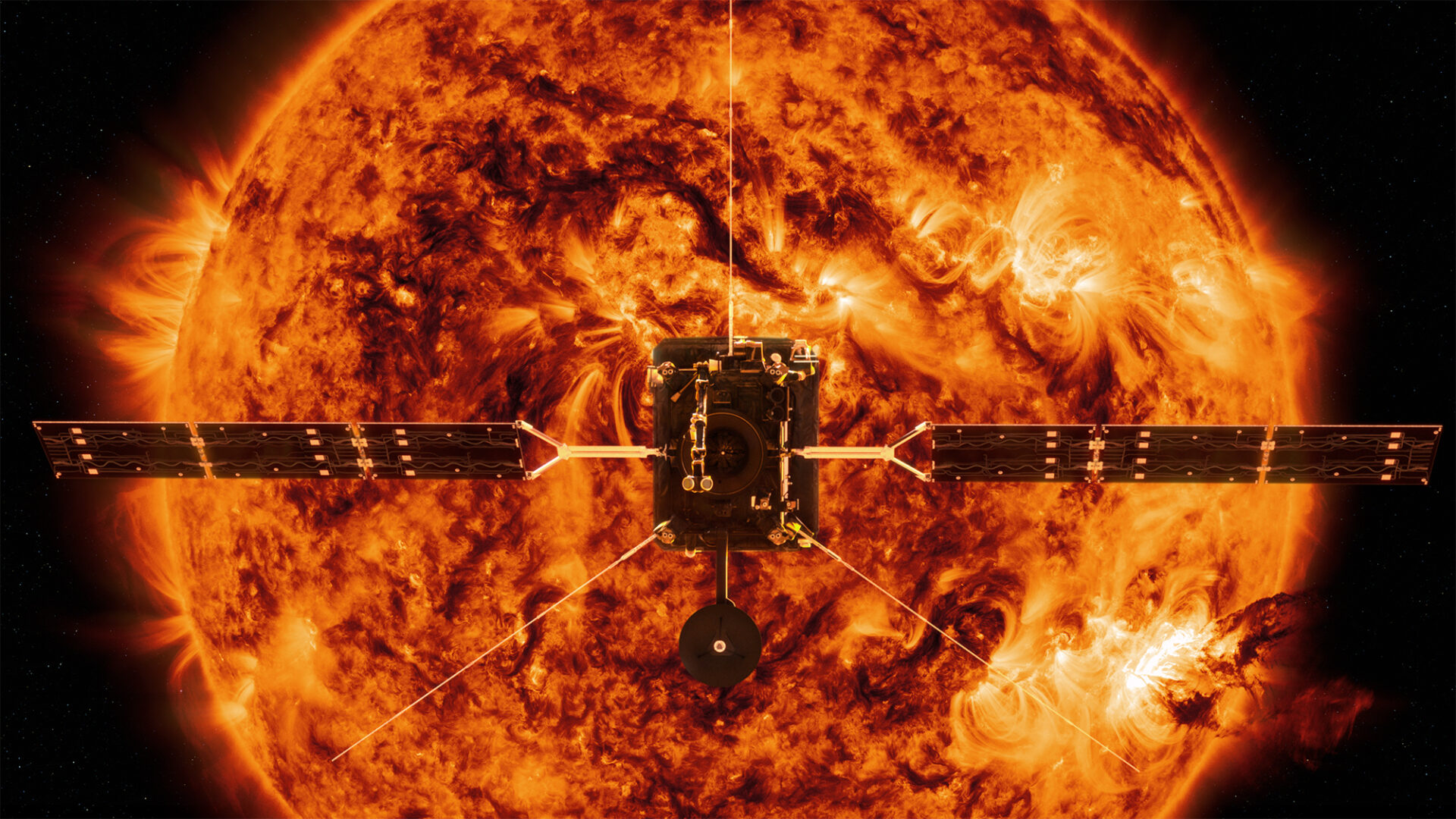Recently, the Solar Orbiter spacecraft once again flew close to the Sun to show mankind incredible images of approaching the star, which it captured for 20 days: from September 20 to October 10, 2022. The stunning sequence was made at a time when our Sun is in the active phase, so the video shows a lot of large plasma plumes that emerge from the surface of the star.

The European Space Agency (ESA) manages the Solar Orbiter mission. They published an amazing time-lapse shot taken with the help of the spacecraft’s Extreme Ultraviolet Radiation (EUI) camera with high resolution. EUI managed to shoot the Sun in panoramic mode for all 20 days, which allowed scientists to get an incredibly detailed look at the star.
Scientists have improved the colors in time-lapse photography, because the eye does not see the wavelength of ultraviolet radiation in which the device operates. When a star turns around in the video, we see how active it is. The atmosphere of its corona reaches a temperature of one million degrees Celsius.
Attentive viewers may notice that the image jumps slightly. This is because at these moments EUI could not send data to Earth. Depending on where the Solar Orbiter is in orbit, the data transfer time could vary from several hours to several days.
Solar Orbiter makes regular close flights of the Sun, located within the orbit of Mercury. It does not come as close as NASA’s Parker Solar Probe, because it has high-resolution cameras that simply cannot withstand the higher temperatures at which the Parker probe operates.
Solar Orbiter also makes regular overflights of Venus, using its gravity to gradually deflect its orbit from the ecliptic area. These maneuvers will eventually allow the Solar Orbiter to reach the poles of the Sun, which no spacecraft has ever done before. Scientists believe that the polar regions contain clues about how the star generates its magnetic field, which, in turn, controls its 11-year cycle of activity, tides in the formation of sunspots, solar flares and eruptions.
Earlier we reported on how a powerful solar flare disabled radio in Africa and the Middle East.
According to Space
Follow us on Twitter to get the most interesting space news in time
https://twitter.com/ust_magazine

